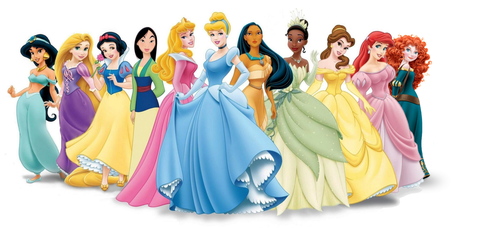How Fairy Tales Affect Our Perceptions Of Reality
It is a truth universally acknowledged that a fairy tale princess, in possession of inexplicably glossy hair and a whippet-thin body must be in want of a Prince Charming.
For a story to qualify as a fairy tale, it must satisfy two criteria- One, the female lead must be leading a jovial life before suddenly having it turned upside down and subject to a 500 year old witch’s curse or such equivalent torture, which usually contradicts all logic. Second, the male lead must make an appearance as the knight in shining armour when all hope is lost and rescue the poor princess in the nick of time.
Fairy tales occupy a special place in every child’s heart while consciously and subconsciously influencing their outlook towards life. It is then no surprise that any archaic beliefs contained in them can promote primeval thinking in children and need to be addressed.
The portrayal of love that fairy tales seem to promote is completely untrustworthy and sets unrealistic standards. Princesses like Jasmine and Snow White found love when they were about fifteen years of age. In the contemporary world where some people choose not to marry at all, the idea of holy matrimony at a time when puberty has barely struck young teenagers seems primitive and highly misleading. There are 16 year olds desperately looking for love failing to understand that they have a whole life ahead of them. On the other hand, there are 40 year old single women who still haven’t found someone right for them, yet we don’t come across fairy tales about them that can boost their morale.
More often than not, fairy tales culminate on a note of “Happily Ever After” with a pompous wedding of the Prince and the Princess (that somehow the whole town attends). Not only does this imply matrimony being the ultimate goal of life, but it completely overlooks professional success or career goals. I’ve never come across a Disney movie where the Princess decided to pursue a management degree or study medicine and marry later.
Another disappointing commonality is the unrealistic beauty standards set by these stories, subconsciously conveying the message to young children that happiness stems from outward beauty. What if Snow White wasn’t so white after all? What if Rapunzel was bald? What if Cinderella had a protruding belly that stood out prominently in her exquisite ball gown? How often do we come across a chubby princess without the glow of a thousand suns emanating from her face? In exceedingly rare situations when a plus size character features in a Disney movie, they are either the diabolical and rancorous antagonist dead set on slaying the poor princess or the compassionate maternal figure there to advise the otherwise imprudent protagonists who go about accepting apples from strangers and giving up their voices and souls to be with men they have only seen once.
Equally problematic is the heightened domesticity that is shared by some of the leading fairy tale princesses like Snow White, Cinderella and Belle. This inadvertently promotes the idea of women being submissive and domestic workers. When have we encountered stories where the male lead is forced to scrub floors or clean chimneys and can’t go to lavish Balls? This ends up imparting the wrong idea to impressionable young minds that being passive, gentle and servile are desirable qualities in a young girl.
However, as people become more woke by the day, they have started expressing their discontentment regarding some of the anachronistic ideas about the role of women as shown in fairy tales. Actresses like Kristen Bell and Keira Knightley have also raised concerns over some of the pivotal storylines that depict women being kissed while they sleep, without consent, and rescued by the male protagonist while they flounder helplessly.
Amidst all this, a small bundle of fairy tales is emerging gradually in an attempt to bust these stereotypes in today’s progressive world.
The Disney movie ‘Moana’ (2016) is the story of a spirited young girl who embarks on a mission to save her people and fights the monsters in the ocean, without waiting for her ‘Prince Charming’ to come up on a white horse. Similarly, Mulan seems to combat the trend of ‘damsel in distress’ and defies all odds against her stoically, sending the message of individuality and independence to the audience. When a young girl watches another girl being fearless and using her wit and strength to emerge victorious in the face of adversities, it naturally evokes the same emotions in her.
‘Frozen’ (2013) was yet another Disney movie that baits the viewers into thinking that the male protagonist’s kiss would rescue Anna, ultimately ending with a dramatic plot twist as sisterly love overcomes all hurdles.
Despite this progress, there is no denying that we still have a long way to go. Thus, while fairy tales might be a popular medium to inspire creativity and discussion among children, parents must be cautious in the knowledge they impart while narrating the stories so as to eschew the archaic and orthodox beliefs and prejudices contained in them.




Comments